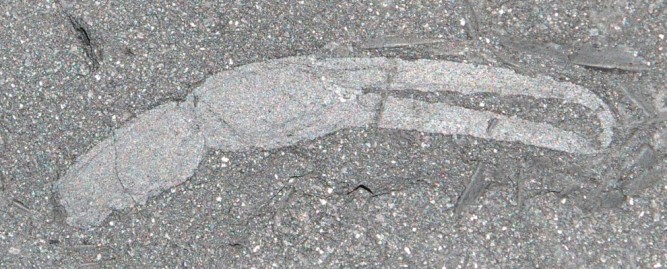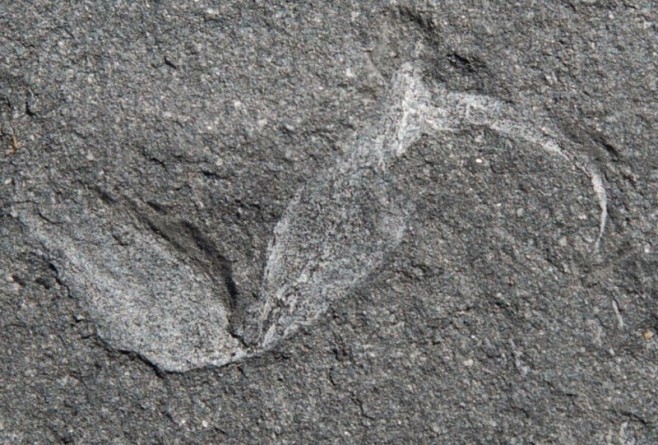Photo by Quinn Anya
350 million years ago, a scorpion died. Today this scorpion is a fossilized memory that was found in rocks from the Devonian Witteberg Group near Grahamstown. This species is now the oldest land-living creature; so old in fact that it is said to have come from a time when the earth was not like we know it today. (Read: The Great Fossil Hunt)
This scorpion fossil provides the earliest evidence of terrestrial animals on Gondwana, a land mass that included present-day Africa, South America and Australia and formed the southern part of a super-continent called Pangea. This discovery is a part of a study being published by scientists in the peer-reviewed journal African Invertebrates.
Find out how you can become a fossil just like Mr Scorpion here.

The scorpion's fossilized pincer is part of Dr Gess's discovery, which has been published in the peer reviewed journal African Invertebrate.
Photo courtesy of Wits University
How was it discovered?
Dr Robert Gess from the Evolutionary Studies Institute at Wits University, who discovered the scorpion fossil, explained that life 350 million years ago was confined to the sea and gradually moved to land through the Denovian period. “Evidence on the earliest colonization of land animals has up till now [sic] come only from the northern hemisphere continent of Laurasia, and there has been no evidence that Gondwana was inhabited by land living invertebrate animals at that time,” explained Gess.
This discovery allowed scientists like Gess make conclusions about some long-held ideas about early life. (Read: A big story from a small bone)

The pincer fossil is part of a unique specimen, which is a new species, that has been called Gondwanascorpio emzantsiensis.
Photo courtesy of Wits University.
Other scorpion fossils found:
Dr Gess uncovered the scorpion fragments – with a pincer and a sting clearly showing in the rock – near Grahamstown in South Africa’s Eastern Cape. This follows on from 2007 when a sea scorpion’s claw was discovered by scientists that proved these creatures were much larger than originally thought. This fossil was 390-million-years-old and the size of the claw indicated that the scorpion ancestor measured eight feet long and was as big as a car.
So what?
“For the first time we know for certain that not just scorpions, but whatever they were preying on were already present in the Devonian. We now know that by the end the Devonian period Gondwana also, like Laurasia, had a complex terrestrial ecosystem, comprising invertebrates and plants which had all the elements to sustain terrestrial vertebrate life that emerged around this time or slightly later,” said Gess.
Made any interesting discoveries lately?















